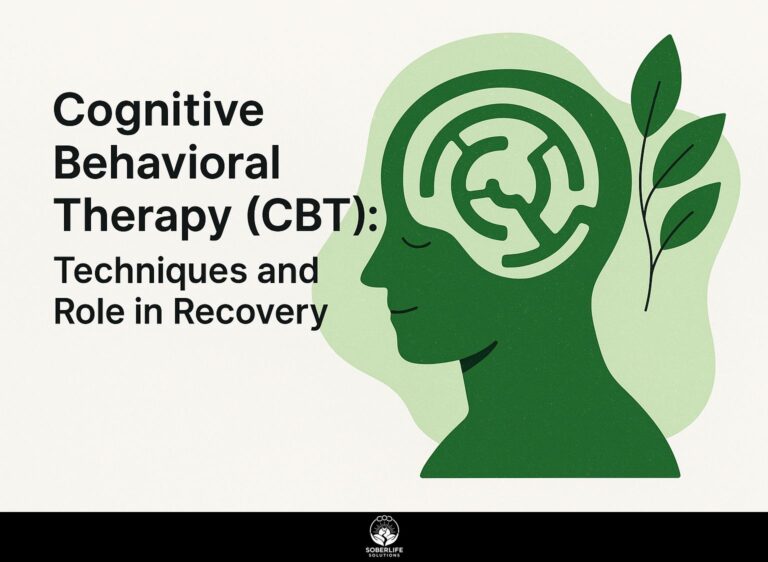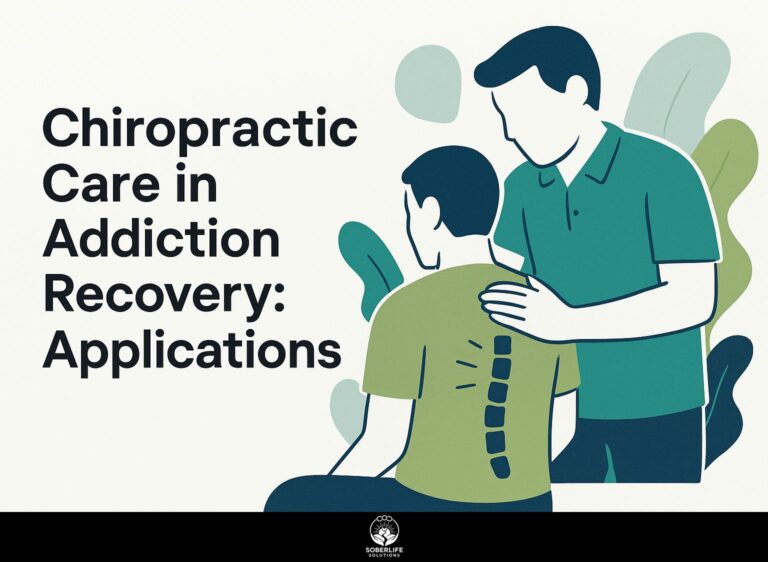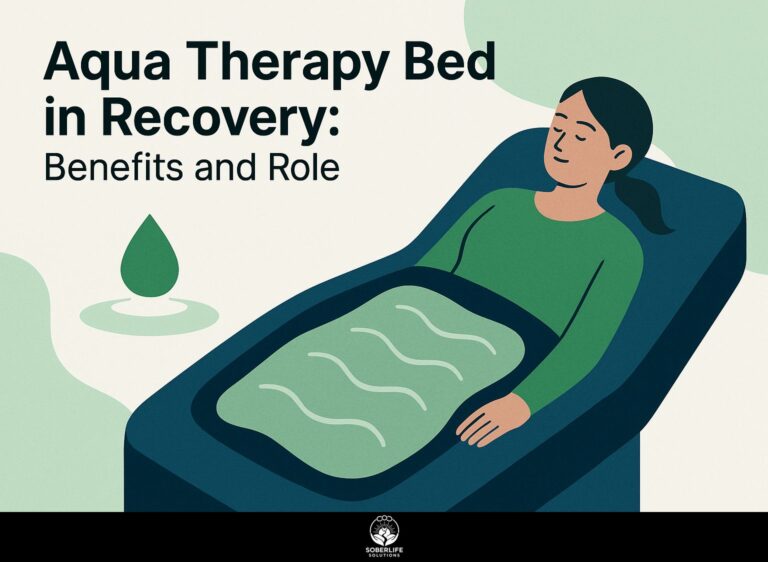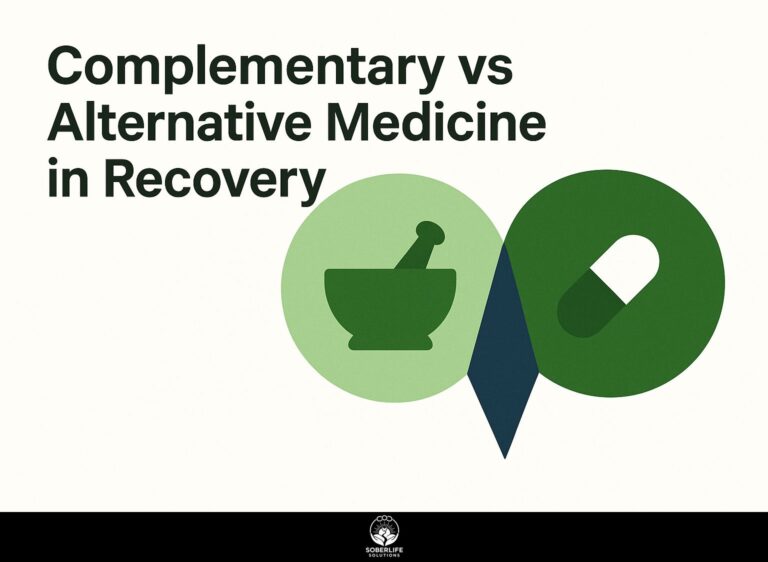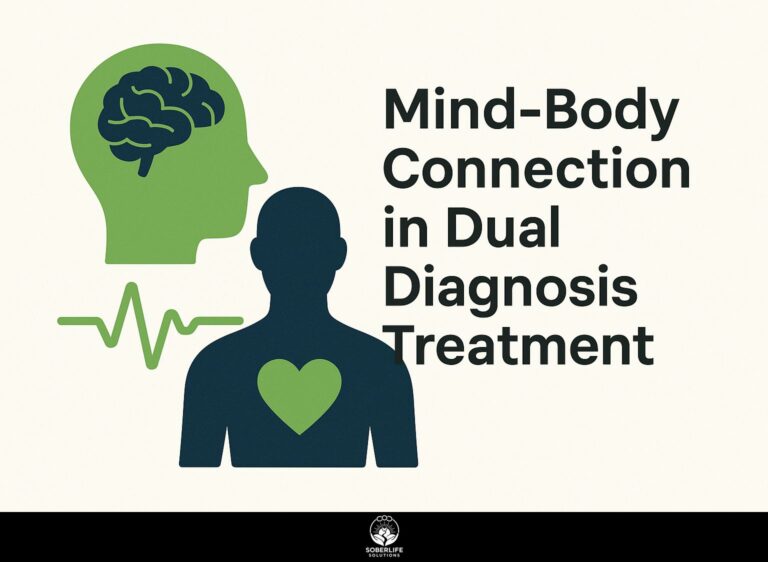Philosophy of Holistic Therapy: Principles and Benefits
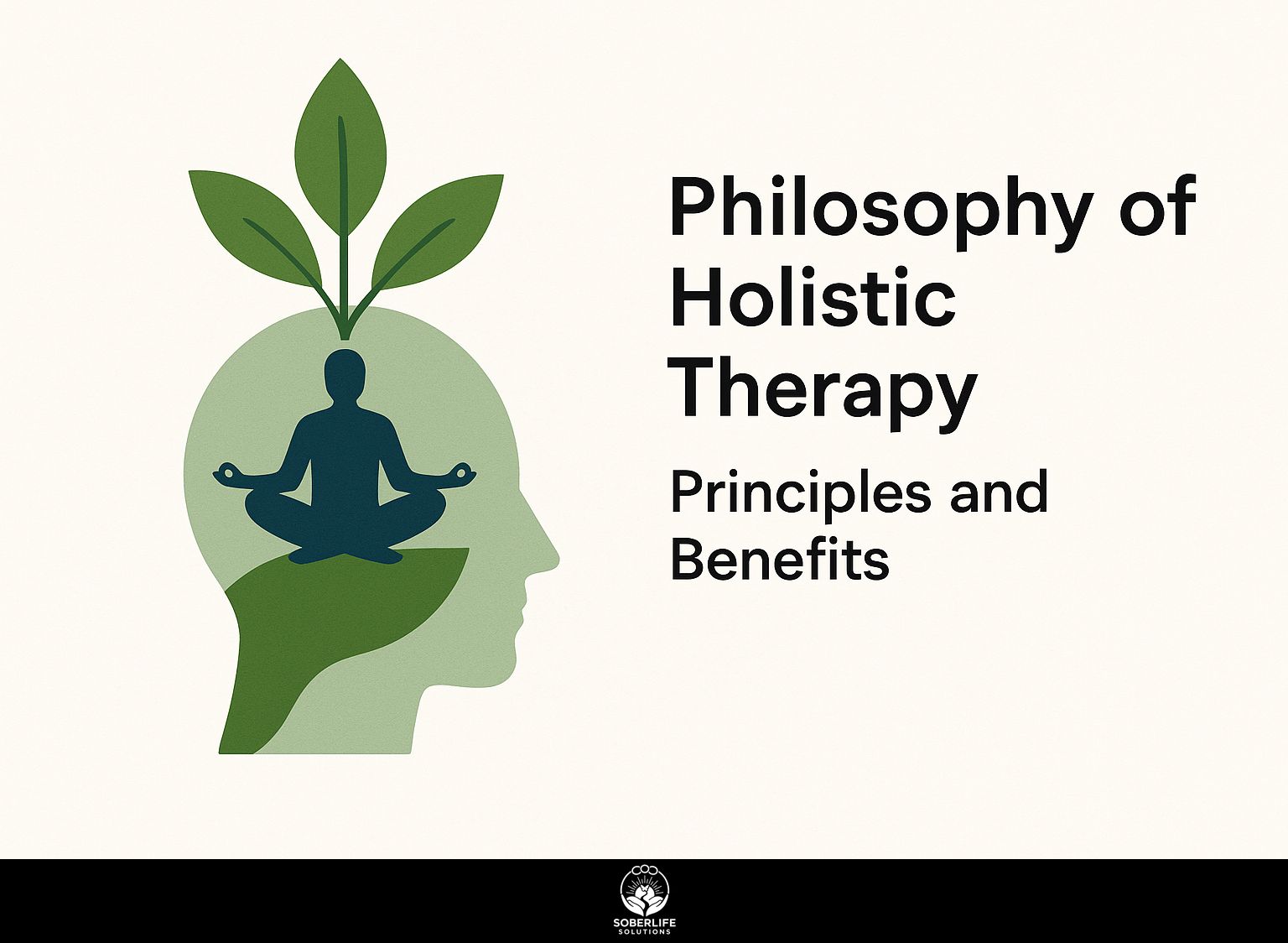
As more people focus on complete care, it’s important to know what this approach involves. Florence Nightingale has influenced an approach in therapy that focuses on treating patients by considering every part of their health. This article examines the study of concepts in nursing literature and looks at qualitative research showing the advantages of whole-person approaches in health care. Learn how combining your mental, physical, and spiritual well-being can change your view on health.
Key Takeaways:
Definition and Overview
Holistic therapy focuses on the whole person, seeking complete wellness and healing instead of only addressing the symptoms of sickness.
This method covers different parts of health, such as physical, emotional, environmental, and spiritual areas.
Professionals use methods such as acupuncture to help with pain, yoga to lower stress, and nutritional counseling to improve eating habits. For context, an in-depth analysis by WebMD explores the various holistic techniques and their benefits.
Unlike typical treatments that concentrate on just reducing symptoms, holistic therapy looks for the underlying reasons for health issues and identifies what each individual specifically requires.
By combining these methods, patients get a care plan that fits their needs better, leading to a higher quality of life.
Core Principles of Holistic Therapy
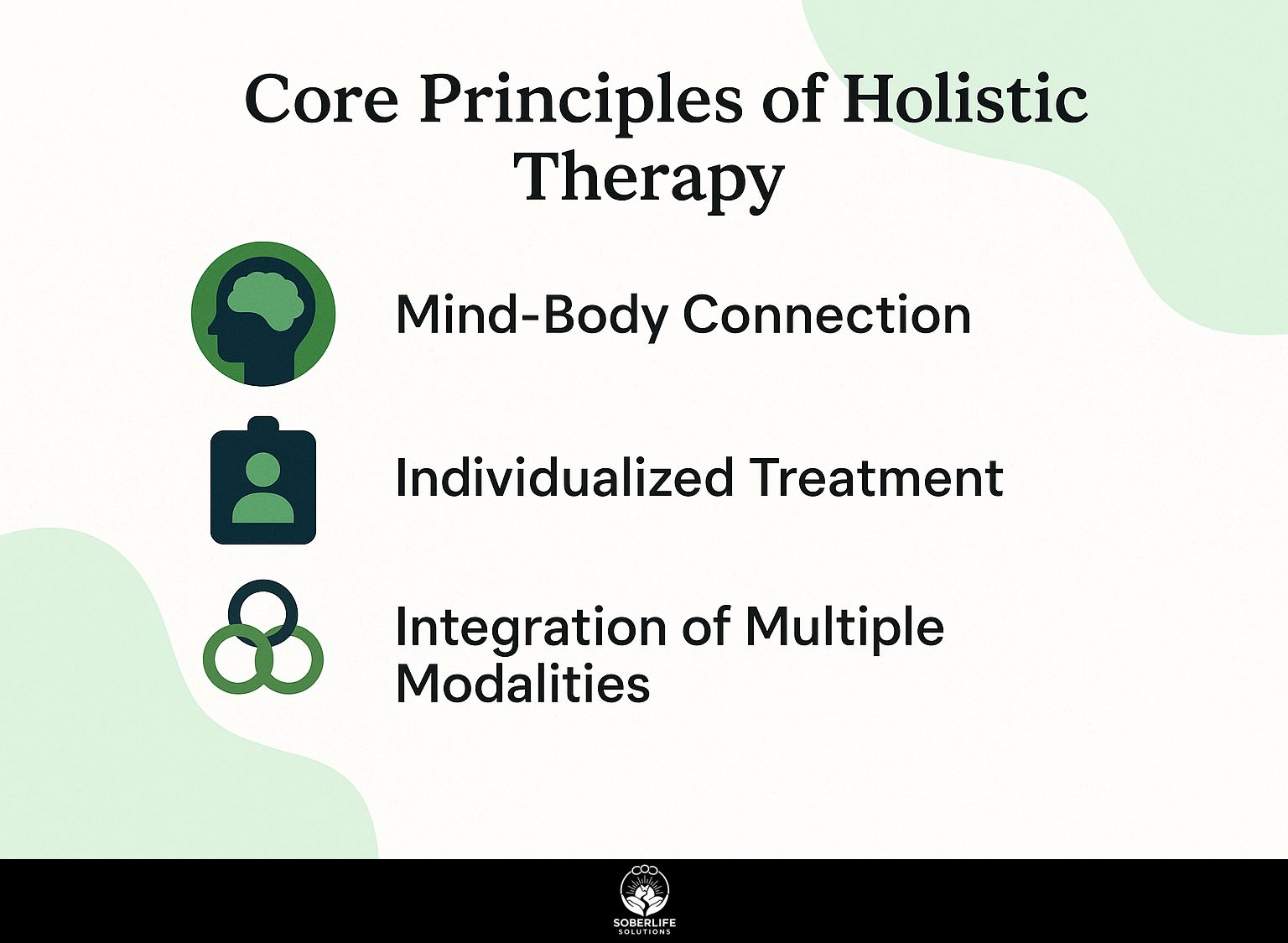
Holistic therapy looks at how emotions, physical health, and spiritual health are connected, allowing practitioners to provide care customized for each person.
Mind-Body Connection
The link between mind and body highlights how mental and physical health are connected. Techniques such as meditation and breathing exercises can reduce stress and aid in recovery.
Healthcare providers can improve patient care by using guided imagery and mindfulness exercises.
For instance, guided imagery involves helping patients visualize peaceful scenes, which research shows can lower anxiety and improve recovery times. This approach aligns well with various therapeutic strategies aimed at enhancing recovery outcomes; elaboration on how different therapies impact recovery processes can provide further insights into effective patient care.
Mindfulness exercises, like focused breathing or body scans, help patients focus on their present experience, promoting relaxation.
Studies from Memorial Sloan Kettering Cancer Center indicate that these techniques can lead to significant reductions in pain and an increase in overall well-being.
Using these methods regularly can provide a more complete approach to patient health.
Individualized Treatment
Personalized care in therapy adjusts treatments to fit each patient’s specific emotional, physical, and spiritual needs, improving their entire path to health.
Healthcare providers can begin by using the Patient Assessment Scale to thoroughly assess a patient’s needs. This tool assesses various aspects of well-being, including emotional stability, physical health, and social support.
For instance, a patient showing signs of anxiety and chronic pain might benefit from a combined approach of cognitive behavioral therapy and physical therapy.
By regularly updating assessments, providers can change treatment plans to keep them effective and suitable for the patient’s changing condition. This repeated process helps build a stronger therapeutic connection and leads to improved health results.
Integration of Multiple Modalities
Using different methods, like acupuncture, aromatherapy, and counseling, helps therapists meet various patient needs more successfully.
For example, acupuncture can help with long-lasting pain, while aromatherapy helps you relax and feel less anxious. Research published in the Journal of Holistic Nursing showed that patients experienced greater relief when they received both acupuncture and aromatherapy, rather than just one of these therapies.
Incorporating counseling provides a space for emotional processing. These treatments work together to make a full plan suited for each person, supporting physical recovery and mental and emotional well-being. For additional insights into the holistic approach, a recent publication by Healthline discusses the benefits and precautions of holistic therapy, highlighting its role in comprehensive patient care.
Benefits of Holistic Therapy
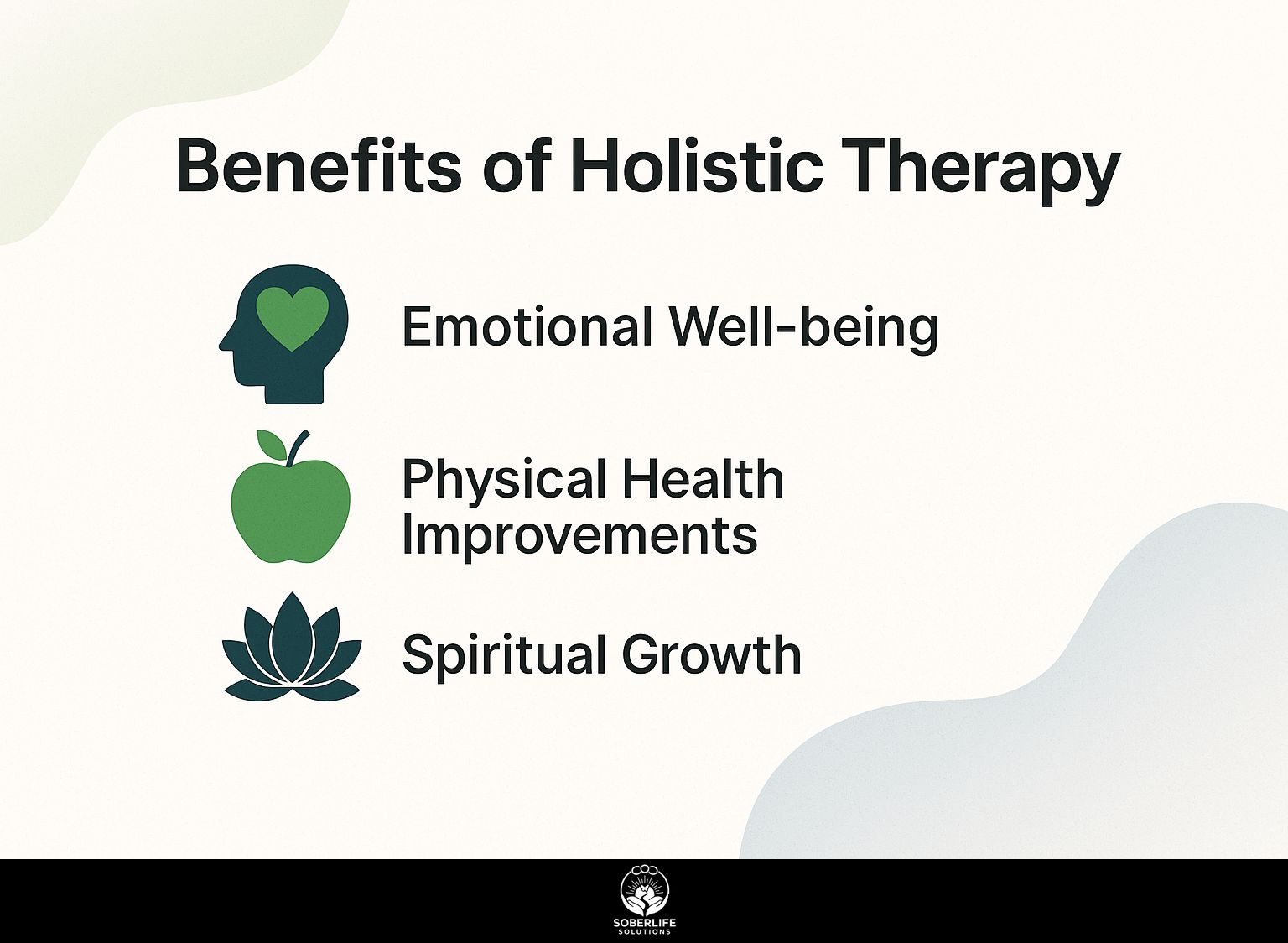
Holistic therapy offers several benefits, such as improved emotional health, better physical condition, and opportunities for spiritual growth, making it a helpful approach in patient-focused care. Interestingly, holistic therapies have also shown significant benefits in the context of alcoholism recovery, where techniques and benefits align closely with therapeutic goals.
Emotional Well-being
Whole-person therapy greatly improves emotional health. Patient satisfaction increases by 50% with mindfulness practices.
Adding all-encompassing therapy to care plans can greatly improve emotional well-being. Research published in 2021 in the Journal of Holistic Nursing showed that doing activities like yoga, meditation, or using aromatherapy can reduce anxiety by 60%.
To start, consider scheduling weekly mindfulness sessions and ensuring access to calming environments. Mood journals and tracking tools allow patients and healthcare providers to observe progress and change approaches according to what suits each person best.
This customized method builds stronger emotional bonds and toughness.
Physical Health Improvements
Studies show that therapy addressing the complete individual can improve physical health by 40%, especially in managing long-term illnesses with combined treatments.
Research indicates that using methods like acupuncture, meditation, and nutritional therapy can greatly help manage long-term illnesses.
For instance, a randomized trial revealed that patients utilizing mind-body practices like yoga experienced a 30% reduction in chronic pain levels.
Evidence from the Journal of Alternative and Complementary Medicine highlights that dietary changes combined with massage therapy resulted in improved blood pressure and stress reduction.
These combined methods improve physical health and support mental well-being, helping patients manage their health.
Spiritual Growth
Whole-person therapy plays a key role in individual development. It helps people know themselves more deeply and encourages habits that aid in healing and well-being.
Writing in a journal is a good way to help spiritual growth. By frequently thinking about their own ideas and emotions, people can better understand their personal experiences.
For example, at a guided spiritual retreat, someone shared that writing in a journal daily helped them find their hidden fears and desires, leading to a strong feeling of self-acceptance.
Going on retreats offers deep experiences that promote mindfulness and group support. Many attendees report feeling rejuvenated and inspired, crediting the structured environment for helping them reconnect with their spiritual essence.
Common Holistic Therapies
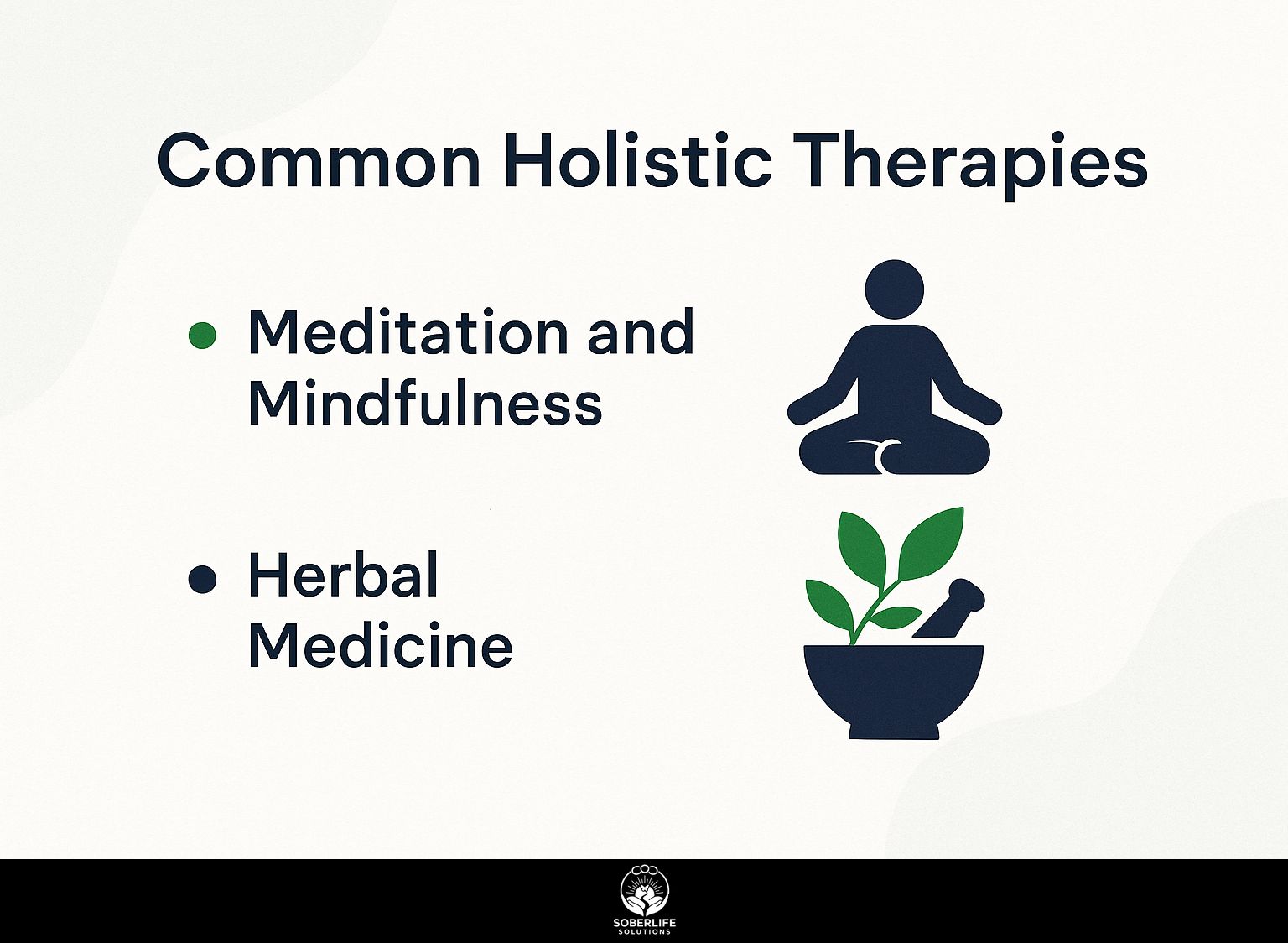
Common therapies such as meditation and herbal medicine offer different options for people looking to improve their health through alternative methods. For those curious about how these methods can aid in recovery, our deep dive into holistic approaches for improving sleep patterns provides insightful perspectives.
Meditation and Mindfulness
Meditation and mindfulness exercises can reduce anxiety by up to 60% in patients, making them key parts of full therapy.
To include these therapies in treatment plans, practitioners can use specific exercises.
For instance, the ‘Five Senses Exercise’ encourages clients to focus on what they can see, hear, touch, smell, and taste in their environment, grounding them in the present moment. Another effective method is guided imagery, where patients visualize calming scenarios, such as walking through a serene forest.
Apps like Headspace or Insight Timer provide structured sessions to support a consistent routine.
Using these techniques can lead to a more complete therapy method.
Herbal Medicine
Herbal medicine, a popular method in natural therapy, can lead to better health for different issues, with research indicating a 30% decrease in symptoms for patients using herbal treatments.
Some of the herbs used in this practice are:
- Chamomile for its calming effects
- Peppermint for digestive support
- Echinacea to bolster the immune system
To use safely, talk to a doctor, especially if you’re on medicines like blood thinners or antidepressants, because some herbs can cause bad reactions.
Always start with a low dose and monitor your body’s response, gradually increasing as needed. Keeping a journal of your experiences can help identify any side effects or interactions.
Challenges and Criticisms
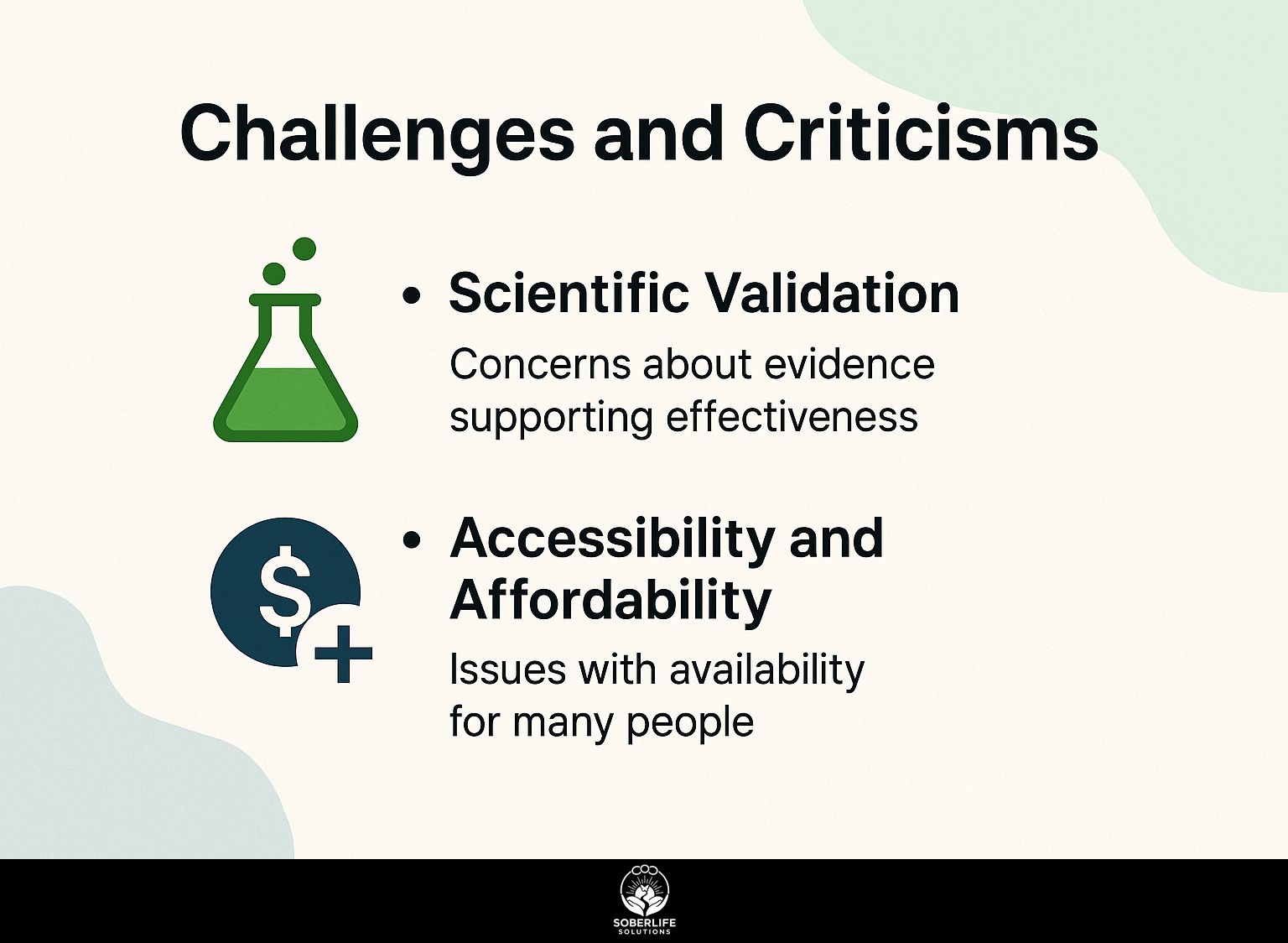
Holistic therapy needs to show it works scientifically and be easier to access so more people can use it in healthcare.
Scientific Validation
One major issue with holistic therapy is the absence of strong scientific evidence supporting its effectiveness. Only 25% of studies in nursing journals show it to be effective.
To improve credibility, upcoming studies should use mixed-methods approaches, combining numerical data with detailed observations.
Researchers could use consistent forms to evaluate results and carry out thorough interviews to understand patient experiences. This two-part method helps us better grasp the effects of whole-body treatments.
Working with universities can help make sure we use thorough methods. Implementing randomized controlled trials (RCTs) on popular therapies like acupuncture and mindfulness can further establish their efficacy in evidence-based practice, addressing skepticism among healthcare professionals.
Accessibility and Affordability
High costs and lack of access are major challenges for complete therapy, with 40% of people saying that expense keeps them from using these services.
To make it easier for people to join, community programs can provide discounted classes or workshops that teach whole-body approaches at a lower price. Practitioners could implement sliding scale fees based on income, ensuring services are available to a broader demographic.
For instance, a local acupuncture clinic might provide a ‘pay what you can’ day each month. Employers can include alternative therapies in wellness programs, which can reduce personal costs and support mental health for employees.
Frequently Asked Questions
What is the philosophy of Whole Therapy?
Holistic Therapy believes that people can heal naturally and that the mind, body, and spirit are all linked. It looks at the entire individual, not just the symptoms, and works to encourage stability and peace in every part of life.
What are the main ideas of Whole-Person Therapy?
Holistic Therapy takes care of the entire person, using natural and gentle ways. It prioritizes stopping problems before they start and encourages people to be aware of themselves and take control of their own health. It also emphasizes the importance of a healthy diet, regular exercise, and stress management in maintaining overall well-being.
What are the benefits of whole-person therapy?
Holistic Therapy helps you feel better physically, mentally, and spiritually. It can ease physical discomfort, lower stress and worry, make sleep better, and give more energy and life. It also promotes self-awareness and personal growth, leading to a more fulfilling and meaningful life.
Can Holistic Therapy replace regular medical treatments?
Holistic Therapy should not be used instead of traditional medical treatment. It can be used in conjunction with, or as a complement to, traditional medical treatment. Holistic Therapy aims to stop health problems and improve general wellness, whereas traditional medicine focuses on addressing particular diseases or health issues.
Who can benefit from Whole Person Therapy?
Yes, everyone can gain from whole-person therapy. It is not limited to a specific age group or health condition. Whether you want to better your physical health, lower stress and anxiety, or understand personal growth and self-awareness, Holistic Therapy can help everyone.
Are there any possible risks or side effects of Holistic Therapy?
Holistic Therapy is usually safe and doesn’t cause any side effects. The methods used are natural and non-invasive, and the focus is on promoting overall well-being rather than targeting specific symptoms. Always talk to a licensed doctor about your health problems or any medications you are using before starting a Holistic Therapy treatment plan.

